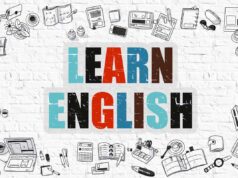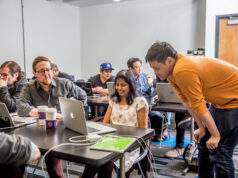The world of education is always changing, and one of the most important changes in recent years is the increasing availability of accommodations for students. Accommodations are modifications that can be made to a student’s learning environment to meet their individual needs.
This can include changes to the curriculum, instruction, physical space, or assessment practices. In this article, we’ll explore some of the most common types of accommodations available for students today.
1. Curriculum Modifications: Curriculum modifications involve altering the content and/or pace of instruction based on a student’s abilities and learning needs. Some examples include reducing reading assignments or providing alternative assignments such as writing summaries instead of reading entire chapters in a book. This type of accommodation helps ensure that all students have access to the material at an appropriate level for them so they can make meaningful progress in their studies despite any limitations they may have due to disability or language barriers.
2. Instructional Modifications: Instructional modifications involve changing how instruction is delivered based on a student’s abilities and learning needs. Examples include providing verbal instructions instead of written ones, allowing extra time on tests or quizzes, providing access to assistive technology (e.g., computer programs with voice recognition), breaking down tasks into smaller parts or allowing more. Accommodation for students in Melbourne have a variety of options available to them
Benefits of Accommodations for Students

Accommodations are tools and strategies that can be used to help students with disabilities achieve success in an educational setting. Accommodations can range from providing extra time on assignments and tests to allowing a student to use technology or other assistive devices that may help them complete their work. By allowing students to access accommodations, educators can create an inclusive environment that enables all students to reach their full potential.
One of the primary benefits of providing accommodations for students is improved academic performance. Research has shown that when appropriate accommodations are made available, students with disabilities experience increased academic gains compared to those without such support.
For example, if a student has difficulty writing by hand due to physical limitations, they may benefit from the use of a laptop or tablet where they can type out their assignments instead. This type of accommodation allows the student’s abilities rather than limitations to shape their learning experience, increasing the likelihood of success.
In addition to improving academic outcomes, accommodating individual needs also provides social and emotional benefits for students. It helps foster an inclusive atmosphere where all learners feel welcome and accepted within the classroom setting regardless of any special needs they may have.
Challenges with Providing Accommodations to Students
Accommodations for students can be a tricky thing to navigate. They provide essential support for students with disabilities, but they can also create challenges. Some of these issues are logistical, while others are related to the way accommodations are handled in school settings.
First, there is the issue of providing individualized accommodations. Schools must balance giving each student what they need with having resources available to serve all students in a classroom or school setting.
This means that teachers and administrators must assess how best to meet all students’ needs while still providing a quality education overall. This can be difficult as some accommodations require extra resources that may not always be available or affordable in certain schools or districts.
Second, there is the challenge of implementing accommodations without inadvertently disadvantaging other students in the classroom setting. For example, if one student receives extended time on tests, this could give them an advantage over their peers who do not have access to those same resources. Schools must ensure that any accommodation given does not disadvantage or place any other student at an unfair advantage.
Conclusion
Accommodation for students is an essential part of student life. It can provide a safe and comfortable environment for students to live in while they are studying. Accommodation must meet the needs and preferences of individual students, so it is important to thoroughly research options before making any decisions. Ultimately, finding the right accommodation can make all the difference when it comes to having a successful academic experience.









